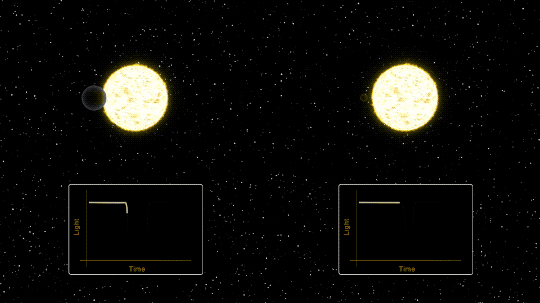
NASA’s newest planet-hunting satellite — the Transiting
Exoplanet Survey Satellite, or TESS for short — has just released its first science image using all
of its cameras to capture a huge swath of the sky! TESS is NASA’s next step in the
search for planets outside our solar system, called exoplanets.

This spectacular image, the first released
using all four of TESS’ cameras, shows the satellite’s full field of view. It
captures parts of a dozen constellations, from Capricornus
(the Sea Goat) to Pictor
(the Painter’s Easel) — though it might be hard to find familiar constellations
among all these stars! The image even includes the Large and Small Magellanic
Clouds, our galaxy’s two largest companion galaxies.
The science community calls this image “first
light,” but don’t let that fool you — TESS has been seeing light since it
launched in April. A first light image like this is released to show off the
first science-quality image taken after a mission starts collecting science
data, highlighting a spacecraft’s capabilities.

TESS has been busy since it launched from NASA’s Kennedy Space Center in Cape Canaveral, Florida. First TESS needed to get into position, which required a push from the Moon. After nearly a month in space, the satellite
passed about 5,000 miles from the Moon, whose gravity gave it the boost it needed to get into a special orbit
that will keep it stable and maximize its view of the sky.

During those first few weeks, we also got a
sneak peek of the sky through one of TESS’s four cameras. This test image
captured over 200,000 stars in just two seconds! The spacecraft was pointed
toward the constellation Centaurus when it snapped this picture. The bright
star Beta
Centauri is visible at the lower left edge, and the edge
of the Coalsack
Nebula is in the right upper corner.

After settling into orbit, scientists ran a
number of checks on TESS, including testing its ability to collect a set of
stable images over a prolonged period of time. TESS not only proved its ability
to perform this task, it also got a surprise! A comet named C/2018 N1 passed through TESS’s cameras
for about 17 hours in July.
The images show a treasure
trove of cosmic curiosities. There are some stars whose
brightness changes over time and asteroids visible as small moving white dots.
You can even see an arc of stray light from Mars, which is located outside the
image, moving across the screen.

Now that TESS has settled into orbit and has
been thoroughly tested, it’s digging into its main mission of finding planets around other stars.
How will it spot something as tiny and faint as a planet trillions of miles
away? The trick is to look at the star!
So far, most
of the exoplanets we’ve found were detected by looking
for tiny dips in the brightness of their host stars. These dips are caused by
the planet passing between us and its star – an event called a transit. Over
its first two years, TESS will stare at 200,000 of the nearest and brightest stars
in the sky to look for transits to identify stars with planets.

TESS will be building on the legacy of NASA’s Kepler spacecraft, which also used
transits to find exoplanets. TESS’s target stars are about 10 times closer than
Kepler’s, so they’ll tend to be brighter. Because they’re closer and brighter,
TESS’s target stars will be ideal candidates for follow-up studies with current
and future observatories.

TESS is challenging over 200,000 of our
stellar neighbors to a staring contest! Who knows what new amazing planets
we’ll find?
The
TESS mission is led by MIT
and came together with the help of many
different partners. You can keep up
with the latest from the TESS mission by following mission updates.
Make
sure to follow us on Tumblr for your regular dose of space: http://nasa.tumblr.com.




Комментариев нет:
Отправить комментарий